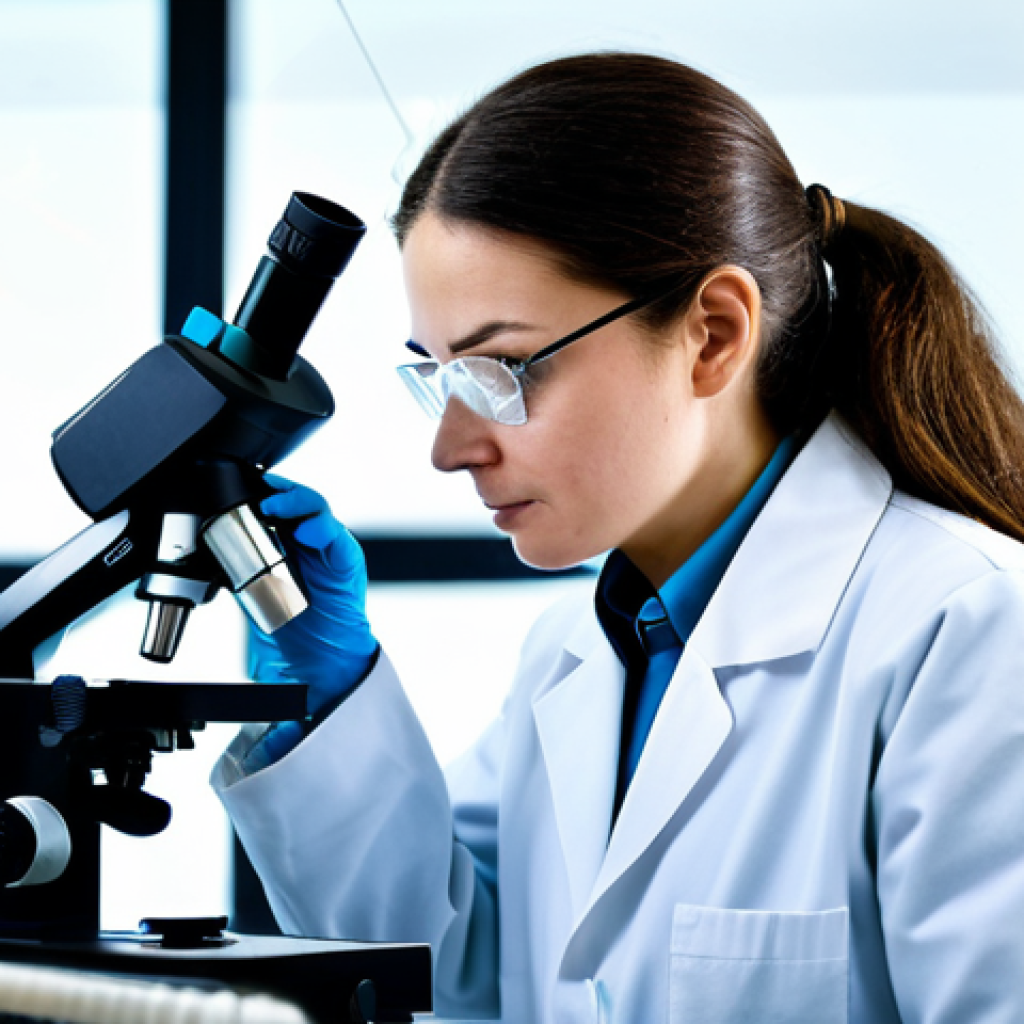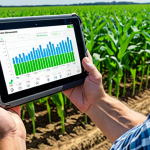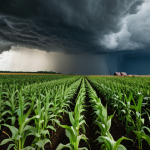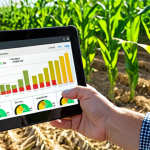I remember staring at my tiny backyard patch, thinking soil was just… dirt. Oh, how wrong I was!
It truly dawned on me, after countless failed attempts at growing anything worthwhile, that this seemingly inert brown stuff is actually a vibrant, complex ecosystem beneath our feet, the very bedrock of life as we know it.
From supporting every bite of food we eat to filtering our water, soil is an unsung hero, often overlooked until problems arise. But here’s the thing: understanding soil isn’t just for farmers or scientists anymore; it’s become crucial for everyone.
With global challenges like climate change, food scarcity, and water quality issues escalating, modern soil science is at the forefront, exploring incredible innovations like regenerative farming and advanced microbiome research to heal our planet.
It’s no longer just about ‘digging in’ but about understanding an intricate, living network that holds the key to a sustainable future, impacting everything from local economies to global food chains.
Getting familiar with its fundamental principles empowers us all to make better choices for our environment and our dinner plates. Let’s find out precisely what makes it so vital.
I remember staring at my tiny backyard patch, thinking soil was just… dirt. Oh, how wrong I was!
It truly dawned on me, after countless failed attempts at growing anything worthwhile, that this seemingly inert brown stuff is actually a vibrant, complex ecosystem beneath our feet, the very bedrock of life as we know it.
From supporting every bite of food we eat to filtering our water, soil is an unsung hero, often overlooked until problems arise. But here’s the thing: understanding soil isn’t just for farmers or scientists anymore; it’s become crucial for everyone.
With global challenges like climate change, food scarcity, and water quality issues escalating, modern soil science is at the forefront, exploring incredible innovations like regenerative farming and advanced microbiome research to heal our planet.
It’s no longer just about ‘digging in’ but about understanding an intricate, living network that holds the key to a sustainable future, impacting everything from local economies to global food chains.
Getting familiar with its fundamental principles empowers us all to make better choices for our environment and our dinner plates. Let’s find out precisely what makes it so vital.
The Unseen Architects Beneath Our Feet
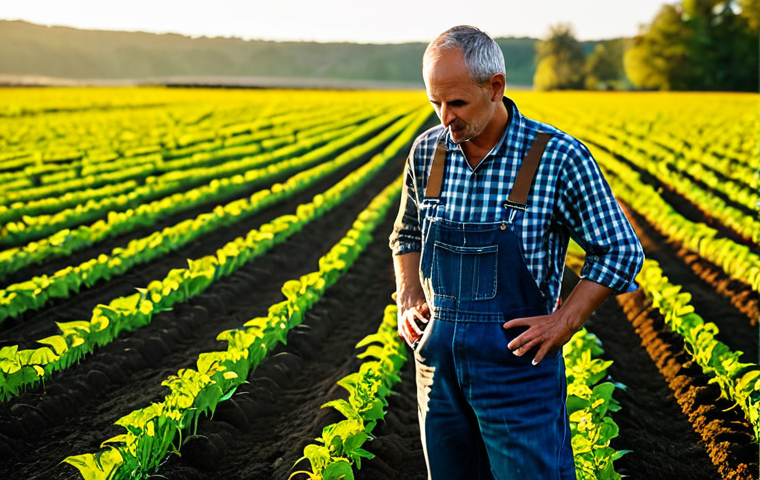
It’s easy to look at a handful of soil and just see brown crumbs, right? But what if I told you that very handful teems with more living organisms than there are people on Earth?
My mind was absolutely blown when I first learned this. We’re talking about a microscopic world of bacteria, fungi, protozoa, and nematodes, alongside larger creatures like earthworms and insects, all working tirelessly.
They are the true engineers of our planet, constantly breaking down organic matter, cycling nutrients, and literally breathing life into the ground. I’ve personally spent hours just observing the way earthworms churn the soil in my compost pile, creating those beautiful, dark castings that are pure gold for plant growth.
It’s a ballet of decomposition and synthesis, a continuous cycle that turns dead leaves and plant residues into the rich, dark humus that fuels new life.
This humification process, driven by these tiny architects, is what gives healthy soil its structure, its ability to hold water, and its incredible fertility.
Without these unsung heroes, our soil would quickly become sterile, compacted, and utterly useless for supporting the vibrant ecosystems we rely on. Understanding their role is the first step towards truly appreciating the living miracle underfoot.
1. Decomposers: The Recycling Crew
Imagine a bustling city beneath your feet, where billions of tiny workers are diligently breaking down everything that falls to the ground. These are our decomposers—bacteria, fungi, and a myriad of other microorganisms.
They’re the ultimate recyclers, turning dead plants, fallen leaves, and animal waste into essential nutrients that plants can absorb. I remember the satisfying feeling when my homemade compost finally broke down into that rich, earthy-smelling material.
That transformation is entirely thanks to these microscopic champions. They are responsible for carbon cycling, nitrogen fixation, and phosphorus solubilization, processes without which life as we know it simply couldn’t exist.
Their enzymes digest complex organic molecules, making vital elements available to plant roots, creating a continuous loop of life and decay.
2. Soil Structure Engineers: Keeping the Earth Breathable
Beyond nutrient cycling, many soil organisms are physical architects. Earthworms, for instance, are incredible natural tillers. They burrow through the soil, creating channels that improve aeration and water infiltration.
My own garden, after years of neglect, was hard as rock. But after introducing compost (teeming with these beneficial critters) and encouraging earthworms, I could literally feel the difference – it became crumbly, soft, and much more hospitable for roots.
Fungi, particularly mycorrhizal fungi, create vast networks of hyphae that bind soil particles together, preventing erosion and improving overall soil stability.
This creates an open, porous structure vital for root growth, water retention, and gas exchange, ensuring the soil can “breathe” and support a thriving community.
Beyond the Dirt: Unpacking Soil’s Intricate Layers
When I first started gardening, I thought soil was just, well, soil. One homogenous brown mass. Boy, was I wrong!
It turns out, soil is stratified into fascinating layers, or horizons, each with its own unique characteristics and functions. Understanding these layers was a lightbulb moment for me; it explained why some plants struggled while others thrived, and why deep-rooted plants can access nutrients that shallow-rooted ones can’t.
From the rich, organic topsoil that’s bursting with life to the underlying bedrock that forms its foundation, each horizon tells a story of geological history, climate influence, and biological activity.
It’s like peeling back the layers of an onion, but instead of tears, you get a deeper appreciation for the ground beneath your feet. Knowing what’s in each layer, how deep it goes, and how it interacts with the layers above and below it, is absolutely crucial for any serious gardener or aspiring earth steward.
It impacts everything from drainage to nutrient availability, fundamentally dictating what can grow and how robustly.
1. The Living Skin: Organic and Topsoil Horizons
The very top layer, the O horizon, is composed of organic matter in various stages of decomposition—leaf litter, decaying plants, and other detritus. Beneath that lies the A horizon, our precious topsoil.
This is the dark, rich layer where most biological activity occurs, and it’s absolutely teeming with life. This is where plants draw the majority of their nutrients and water, and where my beloved earthworms do their best work.
When I dug into my raised beds, the difference between the dark, crumbly topsoil and the lighter, more compacted subsoil was stark. The health of this top layer directly correlates to the productivity of an ecosystem; it’s the engine room of fertility.
2. Subsoil and Beyond: The Deeper Foundations
Below the nutrient-rich topsoil, we encounter the B horizon, or subsoil. This layer is often lighter in color and contains less organic matter but accumulates clay, iron, and aluminum oxides leached down from above.
It’s less biologically active but still crucial for water retention and root penetration. Deeper still is the C horizon, the parent material from which the soil developed, often partially weathered rock.
And finally, the R horizon is the unweathered bedrock. My family once had a well drilled, and seeing the different colors and textures of the excavated dirt as they went deeper really brought these textbook definitions to life.
Each layer plays a role in water movement, nutrient storage, and providing physical support to plants, illustrating the incredible complexity of soil formation over millennia.
Feeding the Future: Soil’s Role in Sustainable Agriculture
It’s no exaggeration to say that healthy soil is the bedrock of our food security. I used to think of agriculture purely in terms of crops and fields, but it’s become increasingly clear to me that the real foundation is literally beneath our feet.
Modern conventional farming practices have, unfortunately, often prioritized yield over soil health, leading to widespread degradation. But what I’ve personally seen, especially in smaller, community-focused farms, is a growing movement towards sustainable practices that prioritize soil health, not just as a means to an end, but as an end in itself.
Regenerative agriculture, for example, isn’t just a buzzword; it’s a philosophy centered on improving soil fertility and biodiversity. Practices like no-till farming, cover cropping, and complex crop rotations are transforming landscapes, making them more resilient to extreme weather, and producing more nutrient-dense food.
It’s a return to traditional wisdom, enhanced by scientific understanding, recognizing that when we care for the soil, the soil cares for us. The connection between healthy soil and the nutritional quality of our food is profound, and I believe understanding this link is vital for anyone concerned about what’s on their plate.
1. Regenerative Practices: A New Hope for the Land
Regenerative agriculture is a holistic approach that focuses on restoring and enhancing soil health. Instead of constantly tilling the soil, which disrupts its structure and releases carbon, no-till farming keeps the soil intact, preserving its intricate fungal networks and microbial life.
I’ve heard farmers rave about how much less water they need to irrigate fields that have been managed with no-till for years, simply because the soil’s water-holding capacity dramatically improves.
Cover crops, planted during off-seasons, protect the soil from erosion, suppress weeds, and add organic matter. Diverse crop rotations break pest and disease cycles and contribute to overall soil biodiversity.
It’s a fundamental shift from extractive farming to a system that gives back more than it takes.
2. The Nutrient Density Connection: What’s in Your Food?
The health of our soil directly impacts the nutrient density of our food. When plants grow in rich, biologically active soil, they have access to a wider array of macro and micronutrients.
This means the fruits, vegetables, and grains they produce are more packed with vitamins, minerals, and beneficial compounds. I’ve read studies showing significant declines in nutrient levels in produce over the past decades, largely attributed to depleted soils.
Conversely, I’ve tasted vegetables grown in regenerative farms that had a depth of flavor and vibrant energy I rarely find in conventional supermarket produce.
This isn’t just anecdotal; it’s a growing area of research demonstrating the direct link between a thriving soil food web and truly nourishing food, impacting human health from the ground up.
The Living Network: Understanding the Soil Microbiome
My journey into understanding soil truly took off when I started learning about the soil microbiome. It sounds incredibly scientific and intimidating, but it’s really just the community of billions of microorganisms living in the soil.
And let me tell you, they are the unsung heroes of healthy plant life! Imagine an invisible, complex city underfoot, where countless tiny citizens are performing vital jobs.
Bacteria, fungi, viruses, protozoa – they’re all there, interacting in ways we’re only just beginning to fully comprehend. My personal experience with plant diseases, like powdery mildew on my squash, taught me a harsh lesson about what happens when this delicate balance is off.
A healthy soil microbiome acts as a natural immune system for plants, suppressing pathogens, fixing nitrogen, breaking down toxins, and making nutrients available that would otherwise be locked away.
It’s a dynamic, ever-changing ecosystem, and how we treat our soil directly influences its health. When we add synthetic fertilizers and pesticides indiscriminately, we’re essentially bombing this microbial city, disrupting its delicate balance and making plants more dependent on external inputs.
On the other hand, feeding the soil with organic matter encourages a diverse and robust microbial community, leading to stronger, more resilient plants that can practically take care of themselves.
1. Mycorrhizal Magic: Fungi as Plant Partners
One of the most fascinating partnerships in the soil is between plants and mycorrhizal fungi. These fungi form extensive networks of tiny threads (hyphae) that extend far beyond the reach of plant roots.
They essentially act as an extension of the root system, foraging for water and nutrients, especially phosphorus, and delivering them directly to the plant.
In return, the plant provides the fungi with carbohydrates produced through photosynthesis. I remember seeing incredible images of these fungal networks under a microscope, looking like a vast underground internet connecting different plants.
My own plants started thriving after I inoculated my soil with mycorrhizal fungi – they seemed more resilient to drought and certainly had a more vigorous growth habit.
This symbiotic relationship is a cornerstone of natural ecosystems, increasing plants’ access to resources and their overall stress tolerance.
2. Bacteria’s Boon: Nitrogen Fixers and Nutrient Providers
Bacteria might be tiny, but their impact is monumental. One of their most critical roles is nitrogen fixation. Atmospheric nitrogen, while abundant, is unusable by most plants.
Certain bacteria, like *Rhizobia* living in root nodules of legumes (think beans and peas), convert this atmospheric nitrogen into a form plants can absorb.
This is why legumes are often used as cover crops to enrich soil. Beyond nitrogen, countless other bacterial species solubilize phosphorus, cycle sulfur, and break down complex organic compounds into plant-available forms.
I personally use bacterial inoculants when planting new seedlings, and I’ve observed a noticeable difference in early vigor and root development, signaling that these unseen helpers are hard at work.
| Soil Component | Primary Role | Impact on Plant Health |
|---|---|---|
| Minerals (Sand, Silt, Clay) | Physical structure, nutrient storage | Determines drainage, aeration, and nutrient retention capacity. |
| Organic Matter | Nutrient source, water retention, microbial food | Improves fertility, soil structure, and buffers pH. |
| Water | Nutrient transport, plant hydration | Essential for nutrient uptake and all plant physiological processes. |
| Air | Root respiration, microbial activity | Provides oxygen for roots and aerobic microorganisms. |
| Living Organisms | Decomposition, nutrient cycling, disease suppression | Enhances nutrient availability, improves soil structure, protects plants. |
From Backyard to Global Impact: Practical Soil Stewardship
It’s easy to feel overwhelmed by global environmental challenges, but I’ve found incredible empowerment in realizing that much of the solution starts right in my own backyard.
Every action we take, no matter how small, to improve soil health contributes to a larger positive impact. From choosing to grow some of your own food to supporting local farmers who prioritize soil health, our choices ripple outwards.
I remember starting with just a small composting bin, feeling like I wasn’t doing much, but then I saw how much waste I diverted from landfills and how incredibly rich my garden beds became.
That little bin sparked a deeper commitment. Practical soil stewardship isn’t just about grand agricultural schemes; it’s about making conscious decisions in our daily lives.
It’s about understanding that our consumption patterns, our waste management, and even our purchasing decisions have a direct effect on the health of the planet’s soil.
Advocating for policies that protect prime agricultural land from development, supporting research into sustainable land management, and educating others about the vital role of soil are all crucial steps.
It’s a collective effort, and truly, every single one of us has a part to play in nurturing this vital resource for future generations.
1. Composting and Mulching: Giving Back to the Earth
These are perhaps the easiest and most impactful ways to improve soil health at home. Composting turns kitchen scraps and yard waste into nutrient-rich organic matter.
I cannot emphasize enough how much my garden has transformed since I started composting diligently. The soil feels alive, teeming with worms, and my plants are healthier than ever.
Mulching, which involves covering the soil surface with organic materials like wood chips or straw, conserves moisture, suppresses weeds, regulates soil temperature, and slowly adds organic matter as it decomposes.
It’s like a protective blanket for your soil, keeping it happy and hydrated.
2. Mindful Choices: What We Buy and Why It Matters
Our purchasing power is immense. Choosing to buy organic produce often means supporting farms that prioritize soil health, avoiding harmful synthetic pesticides and fertilizers that can degrade the soil microbiome.
Shopping at local farmers’ markets allows you to directly ask farmers about their soil management practices. I always make it a point to chat with the growers at my local market about their farming methods, and I’ve learned so much about sustainable practices just through these conversations.
Reducing food waste also plays a part, as it lessens the demand on agricultural land. Every decision, from the food on our plate to the products we choose for our gardens, sends a message about our values and contributes to the larger picture of soil stewardship.
When Soil Goes Wrong: Tackling Common Challenges
Just like any living system, soil can face significant challenges. I’ve certainly had my share of gardening woes directly attributable to unhealthy soil – from plants wilting despite adequate water, to stunted growth, and even pervasive pest issues that seemed impossible to control.
It was incredibly frustrating until I started diagnosing the root cause: the soil itself. Whether it’s compacted soil that roots can’t penetrate, nutrient deficiencies that starve plants, or excessive erosion stripping away fertile topsoil, these issues represent a breakdown in the delicate balance that healthy soil maintains.
The good news is that many of these problems are reversible with the right understanding and intervention. Recognizing the signs of struggling soil is the first step, and often, the solutions involve working with nature, rather than against it.
It’s about identifying the specific problem, understanding its underlying cause, and then applying appropriate, often organic and regenerative, strategies to bring the soil back to life.
My experiences have taught me that patience and observation are key; the soil often tells you exactly what it needs if you just take the time to listen.
1. Compaction and Erosion: Structural Issues
Soil compaction occurs when soil particles are pressed together, reducing pore space for air and water. This is a common problem in heavily trafficked areas, or fields where heavy machinery is used repeatedly.
When my backyard was just a patch of hard-packed clay, I saw firsthand how water would just sit on the surface rather than soaking in, and plant roots struggled to establish.
Erosion, on the other hand, is the loss of topsoil due to wind or water, especially on bare ground. I’ve seen shockingly clear examples of this on construction sites near my home, where topsoil just washes away during a heavy rain.
Both compaction and erosion dramatically reduce soil fertility and its ability to support plant life. Addressing them often involves minimizing disturbance, incorporating organic matter, and using cover crops.
2. Nutrient Deficiencies and Imbalances: The Hungry Earth
Plants need a balanced diet of macro- and micronutrients. When the soil is depleted or imbalances occur, plants can show clear signs of distress – yellowing leaves, stunted growth, or poor fruiting.
I once had a batch of tomato plants that stubbornly refused to produce, despite looking otherwise healthy. A soil test revealed a significant phosphorus deficiency, a classic problem in overworked gardens.
This is where soil testing becomes invaluable. It provides a precise snapshot of your soil’s nutritional profile and pH, guiding you on exactly what amendments are needed.
Instead of guessing, you can target specific deficiencies with organic fertilizers, compost, or mineral amendments, bringing your soil back into balance and allowing your plants to truly thrive.
Innovations from the Ground Up: The Future of Soil Health
The field of soil science is absolutely buzzing with innovation, pushing the boundaries of what we thought was possible. It’s a truly exciting time to be interested in the ground beneath our feet!
From advanced sensors that monitor soil conditions in real-time to incredible breakthroughs in understanding the soil microbiome, scientists and farmers are finding ingenious ways to heal and enhance this vital resource.
I’m constantly amazed by the new technologies emerging – drone mapping, AI-driven nutrient management, and even bio-engineered microbes designed to boost plant immunity or nutrient uptake.
These aren’t just futuristic concepts; many are being implemented right now, transforming agriculture and land management on a global scale. It feels like we’re finally giving the soil the scientific attention and respect it deserves, moving beyond traditional, sometimes damaging, practices towards truly sustainable and even regenerative solutions.
The future of our food systems, our water quality, and indeed, our planet’s climate resilience, hinges on these continuous advancements in soil health, and I’m genuinely optimistic about the potential they hold to create a healthier, more abundant world for everyone.
1. Precision Agriculture and Sensor Technology
Gone are the days of guesswork in farming! Precision agriculture uses technology to manage crops and soil with unprecedented accuracy. This includes GPS-guided machinery, variable-rate fertilizer applicators, and an array of sophisticated sensors.
I’ve seen demonstrations of soil moisture sensors that send real-time data to a farmer’s phone, allowing them to irrigate only when and where it’s needed, saving precious water and preventing overwatering.
Nutrient sensors can pinpoint exactly which areas of a field need specific amendments, optimizing fertilizer use and minimizing runoff. This targeted approach not only boosts efficiency and reduces costs but also significantly minimizes environmental impact, leading to healthier soil and water systems.
2. Microbiome Engineering and Beyond
Perhaps the most thrilling frontier in soil science is microbiome engineering. Researchers are now able to sequence the DNA of soil microbes, identifying specific organisms and their functions.
This allows for the development of highly targeted microbial inoculants – beneficial bacteria or fungi that can be introduced to soil to enhance nutrient cycling, suppress pathogens, or even help plants tolerate drought or salinity.
I’m following studies on ‘bio-stimulants’ which leverage these microbial insights to naturally boost plant growth without relying on synthetic chemicals.
Beyond microbiology, advancements in bioremediation use plants and microbes to clean up contaminated soils, offering a natural and sustainable way to restore damaged land.
The possibilities are truly endless, promising a future where we can nurture soil health with unprecedented precision and effectiveness.
Concluding Thoughts
As we wrap up our deep dive into the incredible world beneath our feet, I hope you feel as inspired and empowered as I do about the vital role of soil. It’s far more than just dirt; it’s a dynamic, living ecosystem that underpins every aspect of our lives, from the food on our plates to the air we breathe. My journey from seeing soil as inert brown stuff to recognizing it as a vibrant miracle has been truly transformative, and it’s a realization I believe we all need to embrace. By understanding its complexities and committing to its health, whether in our gardens or through our daily choices, we become active participants in nurturing a sustainable future. Let’s continue to dig deeper, literally and figuratively, into this invaluable resource.
Useful Information
1. Get a Soil Test: Before adding anything to your garden, get a professional soil test. It’s affordable and tells you exactly what nutrients your soil needs (or has in excess) and its pH, saving you time, money, and guesswork.
2. Start Composting: Turn your kitchen scraps and yard waste into “black gold.” Composting enriches your soil with organic matter, improving its structure, water retention, and nutrient availability. It’s easier than you think!
3. Mulch, Mulch, Mulch: Cover bare soil with a layer of organic mulch (wood chips, straw, leaves). This conserves moisture, suppresses weeds, regulates soil temperature, and slowly adds vital organic matter as it decomposes.
4. Support Regenerative Farms: Look for local farmers who practice regenerative agriculture. Your purchasing choices directly support sustainable methods that build soil health, providing you with more nutrient-dense food.
5. Observe Your Soil: Take time to truly look at, feel, and even smell your soil. A healthy soil will be dark, crumbly, and smell earthy. Look for earthworms – they’re a great indicator of a thriving soil ecosystem!
Key Takeaways
Soil is not just inert dirt; it’s a complex, living ecosystem vital for all life on Earth. Its microscopic organisms are unsung heroes, driving nutrient cycles and building healthy structure. Understanding soil’s intricate layers and diverse microbiome reveals its profound impact on agriculture, food security, and human health. By embracing practices like composting, mulching, and supporting sustainable farming, we can all contribute to its health. Investing in soil health is an investment in our planet’s future, ensuring a resilient and thriving environment for generations to come.
Frequently Asked Questions (FAQ) 📖
Q: This intro really made me think beyond just gardening. So, if I’m not a farmer or a scientist, why should I, a regular person, genuinely care about soil beyond just what’s in my backyard?
A: Oh, trust me, I get it! For years, I just thought of soil as, well, dirt. Something you maybe step on, or if you’re like me, occasionally try to plant a basil plant in (and usually fail, sigh).
But what truly hit me – and why it’s so vital for everyone – is how intimately connected it is to literally every single meal we eat and every glass of water we drink.
It’s not just about growing food; it’s the quiet hero filtering our water, holding vast amounts of carbon to fight climate change, and even shaping the nutrients in our food.
Think about it: that perfect avocado toast you had this morning, or the crisp lettuce in your salad? They didn’t just magically appear. Their quality, their very existence, began in the soil.
And when the soil isn’t healthy, you feel it, whether it’s through rising food prices at the grocery store or the increasing frequency of flash floods in your town.
It’s a bit like your home’s foundation; you don’t notice it until it starts cracking, but by then, the problems are far bigger than just a simple fix.
It truly touches every aspect of our lives, often without us even realizing it until something goes wrong.
Q: You mentioned “incredible innovations” like regenerative farming and advanced microbiome research. What exactly are these, and how do they actually help heal our planet? It sounds a bit abstract.
A: That’s a fantastic question, and it’s where things get really exciting, even for a non-scientist like me! Remember how I used to think soil was inert?
Well, regenerative farming is essentially about treating soil like the living, breathing organism it is. Instead of just tilling it relentlessly or dousing it with chemicals, practices like minimal tilling, cover cropping (planting things just to cover the soil, not for harvest), and rotational grazing of livestock actually nurture the soil.
It’s like giving it a multi-vitamin and a spa day! I saw a documentary once where a farmer explained how his soil, once hard as concrete, became spongy and full of earthworms after just a few years of regenerative practices.
This isn’t just fluffy environmentalism; it makes the soil better at holding water (reducing floods and droughts), drawing carbon out of the atmosphere, and producing more nutrient-dense food.
And the microbiome research? That’s like discovering an entire hidden city of tiny, beneficial creatures in the soil that are essential for plant health.
Understanding them lets us work with nature, not against it, which is way more effective in the long run. It’s less about a quick fix and more about restoring a natural balance that truly helps the planet heal from the ground up.
Q: Given how vital soil is and all these global challenges, what’s something practical I can actually do to make a difference, even if I just live in an apartment or don’t have much land?
A: That’s the million-dollar question, isn’t it? It’s easy to feel overwhelmed by the sheer scale of global challenges. But honestly, even small actions collectively make a huge ripple.
If you have any sort of outdoor space, even a tiny balcony, consider starting a small composting bin for your food scraps. It’s incredibly satisfying watching your banana peels and coffee grounds transform into rich, beautiful soil amendment.
That finished compost is like gold for any plant, whether it’s a window box herb or a backyard shrub, making your soil healthier and reducing waste going to landfills.
If you’re a consumer, you can consciously choose to buy produce from local farmers who you know practice sustainable or regenerative methods – ask them at the farmers market, they often love to talk about it!
Supporting brands committed to those practices with your grocery dollars sends a powerful message. Even simply becoming more aware, talking about soil health with your friends and family, and understanding its role makes a difference.
It’s about shifting our mindset from seeing soil as just a backdrop to recognizing it as the foundation of our existence. Every little bit of awareness and action truly helps move the needle towards a more sustainable future.
📚 References
Wikipedia Encyclopedia
구글 검색 결과
구글 검색 결과
구글 검색 결과
구글 검색 결과
구글 검색 결과
